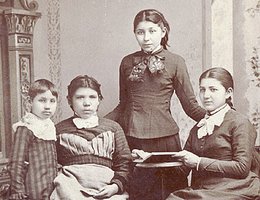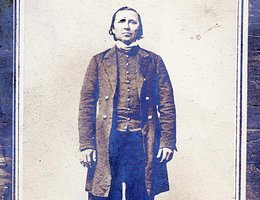

Susan’s father, Joseph La Flesche, also known as Iron Eye, was the last recognized chief of the Omaha. He had a big impact on Susan’s life. He encouraged his people, especially his children, to seek education. Susan and the other La Flesche children all were leaders who continued their father’s legacy of helping the Omaha make the painful transition to white society while still holding onto their own culture.

In 1894 Susan La Flesche married Henry Picotte. (Her sister, Marguerite, married Henry’s brother, Charles!) Henry and Susan had two sons, Carl and Pierre. After her marriage, Susan settled with her husband at Bancroft, Nebraska and set up her own private practice, providing medical care for both Native and European Americans. At the same time, Dr. Picotte cared for her family, her ill mother, and later, her ailing husband.

The hospital built for Susan La Flesche Picotte existed until the late 1940s. Later it served as a care center for the elderly. In 1989, the building was restored, and it now displays photos and artifacts from Susan’s life. Named the Susan La Flesche Picotte Center, it commemorates her medical work and her life, dedicated to the welfare of her people.
All of Chief Joseph La Flesche’s children were quite successful. One of Susan’s older sisters was Susette "Bright Eyes" La Flesche Tibbles, Standing Bear’s interpreter during his trial in 1879. Another older sister, Rosalie LaFlesche Farley (1861-1900) was a very smart, compassionate businesswoman. She served as a resource to her people and has been described as one of the most remarkable women of the state.
To learn more about Dr. Susan La Flesche Picotte visit the PBS Learning Media Library -